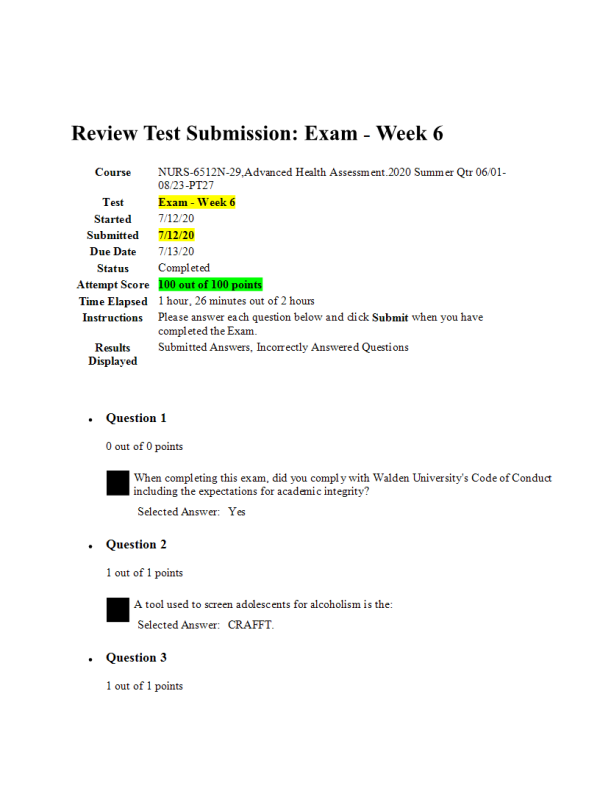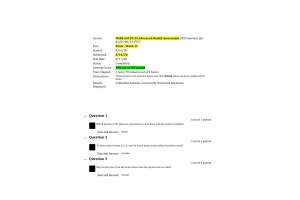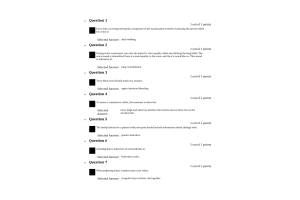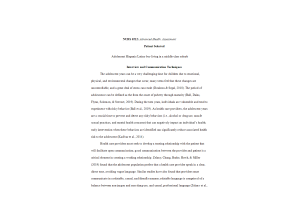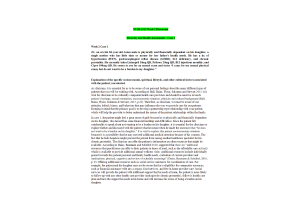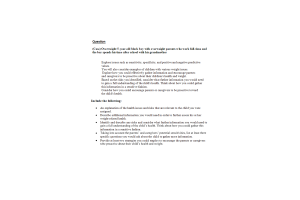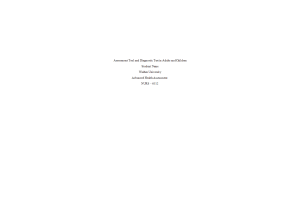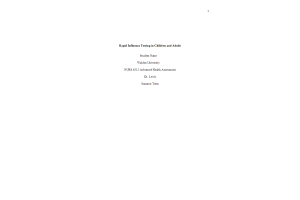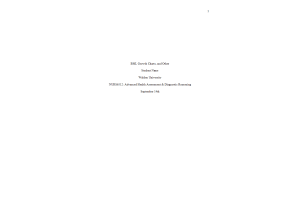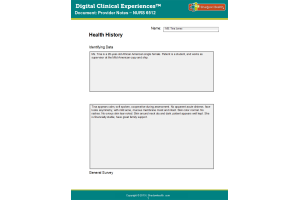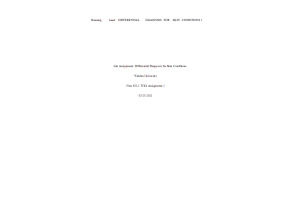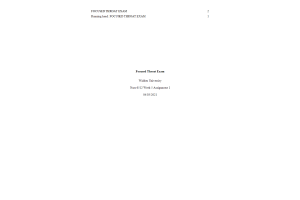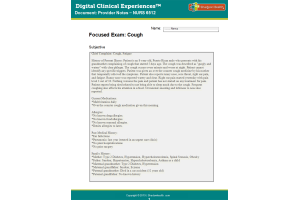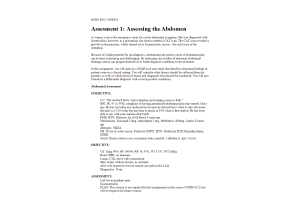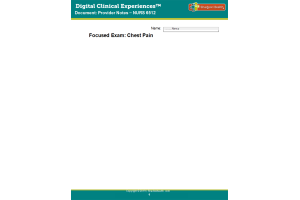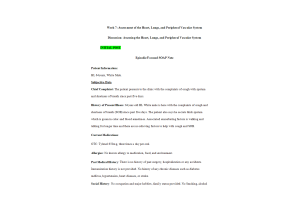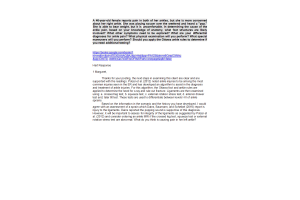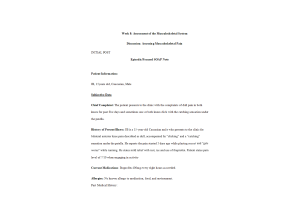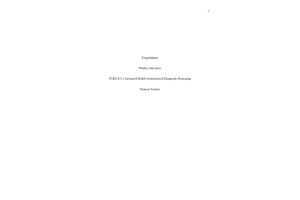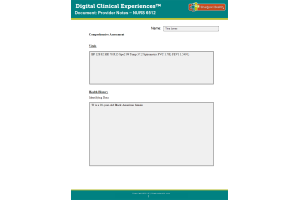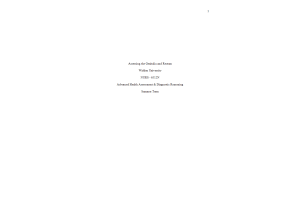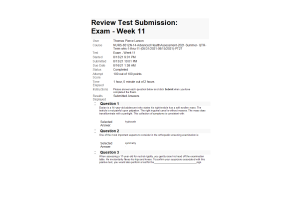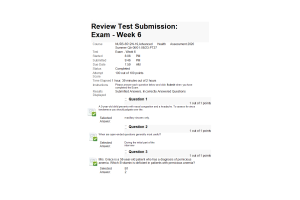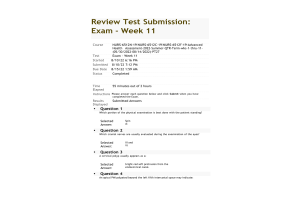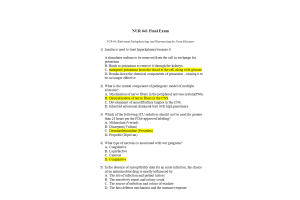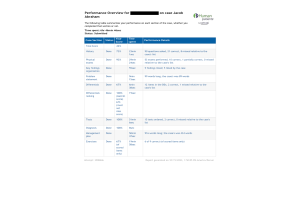NURS 6512N-29 Week 6 Midterm Exam100 out of 100 Points
- $49.00
NURS 6512 - Advanced Health Assessment
- Question: When completing this exam, did you comply with Walden University's Code of Conduct including the expectations for academic integrity?
- Question: A tool used to screen adolescents for alcoholism is the:
- Question: Which Question would be considered a leading Question ?
- Question: Mrs. Berger is a 39-year-old woman who presents with a complaint of epigastric abdominal pain. You have completed the inspection of the abdomen. What is your next step in the assessment process?
- Question: Mr. Marks is a 66-year-old patient who presents for a physical examination to the clinic. Which Question has the most potential for exploring a patient's cultural beliefs related to a health problem?
- Question: Which technique is most likely to result in the patient's understanding of Question ?
- Question: The most superior part of the stomach is the:
- Question: You are collecting a history from an 11-year-old girl. Her mother is sitting next to her in the examination room. When collecting history from older children or adolescents, they should be:
- Question: White, rounded, or oval ulcerations surrounded by a red halo and found on the oral mucosa are:
- You are using an ophthalmoscope to examine a patient's inner eye. You rotate the lens selector clockwise, then counterclockwise to compensate for:
- Question: Mrs. Raymonds is a 24-year-old patient who has presented for a routine concern over her current weight. In your patient teaching with her, you explain the importance of macronutrients. Which of the following is a macronutrient?
- Question: Mr. Mathews is a 47-year-old patient who presents for a routine physical examination. On examination, you have noted a bruit heard over the thyroid. This is suggestive of:
- Question: The adult recommended dietary fat intake should be _____ g/day.
- Question: Which of the following is the most accurate reflection of an individual's food intake?
- Question: Pigmented, raised, warty lesions over the face and trunk should be assessed by an experienced practitioner who can distinguish:
- Question: Bulging of an amber tympanic membrane without mobility is most often associated with:
- Question: Mr. Donalds is a 45-year-old roofer. Your inspection to determine color variations of the skin is best conducted:
- Question: Sweat glands, hair, and nails are all formed from:
- Question: Mr. Williams, age 25, has recovered recently from an upper and lower respiratory infection. He describes a long-standing nasal dripping. He is seeking treatment for a mild hearing loss that has not gone away. Information concerning his chronic postnasal drip should be documented within which section of his history?
- Question: Mr. Mills is a 55-year-old patient who presents to the office for an initial visit for health promotion. A survey of mobility and activities of daily living (ADLs) is part of a(an):
- Question: Before performing an abdominal examination, the examiner should:
- Question: Which part of the information contained in the patient's record may be used in court?
- Question: When taking a history, you should:
- Question: Which is the best way to position a patient's neck for palpation of the thyroid?
- Question: In examining the neck of a 34-year-old female patient, you note that the uppermost ridge of the tracheal cartilage is at the:
- Question: Periods of silence during the interview can serve important purposes, such as:
- Question: When palpating the abdomen, you should note whether the liver is enlarged in the:
- Question: You are palpating a patient's thyroid and find that its broadest dimension measures 4 cm. The right lobe is 25% larger than the left. These data would indicate:
- Question:Your patient is complaining of acute, intense sharp epigastric pain that radiates to the back and left scapula with nausea and vomiting. Based on this history, your prioritized physical examination should be to:
- Question: During an interview, tears appear in the patient's eyes and his voice becomes shaky. Initially, you should:
- Question: A 51-year-old woman calls with complaints of weight loss and constipation. She reports enlarged hemorrhoids and rectal bleeding. You advise her to:
- Question: Mr. Kevin Marks is a new health care provider. What is the best method to develop cultural competence?
- Question: Placing the base of a vibrating tuning fork on the midline vertex of the patient's head is a test for:
- Question: During an interview, you have the impression that a patient may be considering suicide. Which action is essential?
- Question: A detailed description of the symptoms related to the chief complaint is presented in the:
- Question: Which statement is true regarding the relationship of physical characteristics and culture
- Question: Which technique is most likely to result in the patient's understanding of Question ?
- Question: Mrs. Britton is a 34-year-old patient who presents to the office with complaints of skin rashes. You have noted a 4' 3-cm, rough, elevated area of psoriasis. This is an example of a:
- Question: Your patient returns for a blood pressure check 2 weeks after a visit during which you performed a complete history and physical. This visit would be documented by creating a(n):
- Question: Mrs. Hartzell is a 34-year-old patient who has presented for nutritional counseling because she is a vegetarian. Deficiency of which of the following is a concern in the vegetarian diet?
- Question: Fluorescing lesions are best distinguished using a(n):
- Question: When assessing abdominal pain in a college-age woman, one must include:
- Question: During percussion, a dull tone is expected to be heard over:
- Question: In issues surrounding ethical decision making, beneficence refers to the:
- Question: Nuchal rigidity is most commonly associated with:
- Question: Subjective and symptomatic data are:
- Question: As part of your health promotion education for a new patient, you explain that the risk factors for skin cancer include:
- Question: Mrs. Tuber is a 36-year-old patient who comes into the health center with complaints that her fingernails are not growing. Which structure is the site of new nail growth?
- Question: To correctly document absent bowel sounds, one must listen continuously for:
- Question: Which of the following is an "ABCD" characteristic of malignant melanoma?
- Question: You are planning to palpate the abdomen of your patient. Which part of the examiner's hand is best for palpating vibration?
- Question: Mr. Jones is a 45-year-old patient who presents for a physical examination. On examination, you note costochondral beading, enlarged skull, and bowed legs and diagnose him with rickets. A deficiency of which fat-soluble micronutrient can result in rickets?
- Question:Mr. Johnson presents with a freely movable cystic mass in the midline of the high neck region at the base of the tongue. This is most likely a:
- Question: In counseling a client regarding nutrition education, you explain that linoleic acid, a major fatty acid, is thought to be essential for:
- Question: Mrs. Kinder is a 39-year-old patient who presents to the office with complaints of an earache. In explaining to the patient about the function of her ears, which ear structure would you tell her is responsible for equalizing atmospheric pressure when swallowing, sneezing, or yawning?
- Question: Regardless of the origin, discharge is described by noting:
- Ms. Jones is a 31-year-old female patient who presents for a routine physical examination. Which examination technique will be used first?
- Question: Penicillin is considered a
- Question: Peritonitis produces bowel sounds that are:
- Question: When are open-ended Questions generally most useful?
- Question: Mrs. Britton brings her 16-year-old son in with a complaint that he is not developing correctly into adolescence. Which structures disproportionately enlarge in the male during adolescence?
- Question: Before performing an abdominal examination, the examiner should:
- Question: Nasal symptoms that imply an allergic response include:
- Question: Coarse, dry, and brittle hair is associated with which metabolic disorder?
- Question: The infant should be placed in which position to have his or her height or length measured?
- Question: Cherry angiomas are a common finding in:
- Question: Underestimation of blood pressure will occur if the blood pressure cuff's width covers:
- Question: Tuning forks with a frequency of 500 to 1000 Hz are most commonly used to measure:
- Question: Auscultation should be carried out last, except when examining the:
- Question: You have just completed a skin assessment on Mr. Baker. During your assessment, you have transilluminated a skin lesion. During the physical examination, you know that skin lesions are transilluminated to distinguish:
- Question: Which of the following organs is part of the alimentary tract?
- Question: When assessing abdominal pain in a college-age woman, one must include:
- Question: To perform the Rinne test, place the tuning fork on the:
- Question: A 5-year-old child presents with nasal congestion and a headache. To assess for sinus tenderness you should palpate over the:
- Question: A serous membrane that lines the abdominal cavity and forms a protective cover for many abdominal structures is the:
- Question: Inspection of the abdomen should begin with the patient supine and the examiner:
- Question: When you are Questioning a patient regarding alcohol intake, she tells you that she is only a social drinker. Which initial response is appropriate?
- Question: During physical examination of a 30-year-old Chinese man, you notice slight asymmetry of his face. The cranial nerve examination is normal. Your best action is to:
- Question: A brief statement of the reason the patient is seeking health care is called the:
- Question: Unusual white areas on the skin may be due to:
- Question: When examining the skull of a 4-month-old baby, you should normally find:
- Question: To approximate vocal frequencies, which tuning fork should be used to assess hearing?
- Question:Which of the following is an expected change in the assessment of the thyroid during pregnancy?
- Question: Mr. Walters, a 32-year-old patient, tells you that his ears are "stopped up." An objective assessment of this complaint is achieved by using the:
- Question: Ms. Otten is a 45-year-old patient who presents with a complaint of weight gain. Which medication is frequently associated with weight gain?
- Question: The term denoting the caregiver's need to do no harm to the patient is:
- Question: Mr. Black is a 44-year-old patient who presents to the clinic with complaints of neck pain that he thinks is from his job involving computer data entry. As the examiner, you are checking the range of motion in his neck and note the greatest degree of cervical mobility is at:
- Question: Peritonitis produces bowel sounds that are:
- Question: Macronutrients are so named because they:
- Question: As you explain your patient's condition to her husband, you notice that he is leaning toward you and pointedly blinking his eyes. Knowing that he is from England, your most appropriate response to this behavior is to:
- Question: A 17-year-old girl presents to the clinic for a sports physical. Physical examination findings reveal bradycardia, multiple erosions of tooth enamel, and scars on her knuckles. She appears healthy otherwise. You should ask her if she:
- Question: Mr. D. complains of a headache. During the history, he mentions his use of alcohol and illicit drugs. This information would most likely belong in the:
- Question: A college student comes to the student health center complaining of difficulty in concentrating during class and while studying. The diet that would contribute to this problem is one that consumes mostly:
- Question: You are completing a general physical examination on Mr. Rock, a 39-year-old man with complaints of constipation. When examining a patient with tense abdominal musculature, a helpful technique is to have the patient:
- Question: What finding is unique to the documentation of a physical examination of a infant
- Question:When communicating with older children and teenagers, you should be sensitive to their:
- Question: Under normal circumstances, how much water is lost daily by the body?
- Question: A fixed image of any group that rejects its potential for originality or individuality is known as a(n):
- Question: Knowledge of the culture or cultures represented by the patient should be used to:
- Question: Mrs. Webb is a 38-year-old patient who has been changing her lifestyle to eat in a healthy way and lose weight. During your health promotion education regarding her nutritional status, you explain the function of dietary protein as:
- Question: When recording physical findings, which data are recorded first for all systems?
